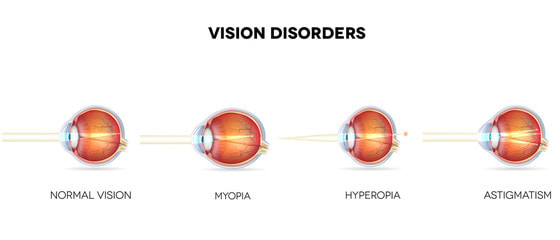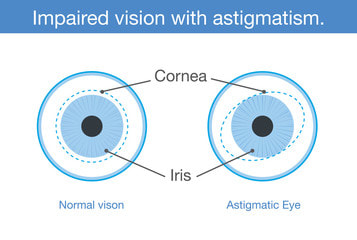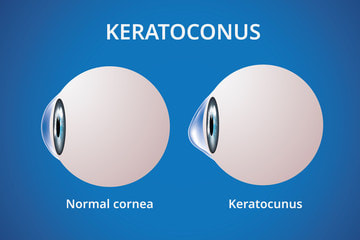Types of Refractive Errors
Refractive errors
happen when the shape of your eye keeps light from focusing correctly on your retina (a light-sensitive layer of tissue at the back of your eye).
Each type of refractive error is different, but they all make it hard to see clearly.
Learn more about refractive errors
happen when the shape of your eye keeps light from focusing correctly on your retina (a light-sensitive layer of tissue at the back of your eye).
Each type of refractive error is different, but they all make it hard to see clearly.
Learn more about refractive errors
|
Nearsightedness
(myopia)Nearsightedness makes far-away objects look blurry. It happens when the eyeball grows too long from front to back, or when there are problems with the shape of the cornea (clear front layer of the eye) or the lens (an inner part of the eye that helps the eye focus). These problems make light focus in front of the retina, instead of on it. Nearsightedness usually starts between ages 6 and 14. Children who spend more time outdoors during these years are less likely to develop nearsightedness, but experts aren’t sure why. |
Severe nearsightedness (also called high myopia) can increase the risk of other eye conditions, like retinal detachment (when the retina is pulled away from its normal position).
Learn more about nearsightedness
Learn more about nearsightedness
|
Farsightedness
(hyperopia)Farsightedness makes nearby objects look blurry. It happens when the eyeball grows too short from front to back, or when there are problems with the shape of the cornea or lens. These problems make light focus behind the retina, instead of on it. People with farsightedness are usually born with it. Learn more about farsightedness |
|
Astigmatism
Astigmatism can make far-away and nearby objects look blurry or distorted. It happens when the cornea or lens has a different shape than normal, which makes light bend differently as it enters the eye. Some people with astigmatism are born with it, but many people develop it as children or young adults. People with astigmatism often have another refractive error, like nearsightedness or farsightedness. Learn more about astigmatism |
|
Presbyopia
Presbyopia makes it hard for middle-aged and older adults to see things up close. As you age, the lens in your eye gets harder and less flexible and stops focusing light correctly on the retina. Everyone gets presbyopia as they get older, usually after age 45. Many people have another refractive error in addition to presbyopia. Learn more about presbyopia |
Keratoconus
Keratoconus is usually diagnosed in teens and young adults. It causes the middle and lower parts of the cornea to get thinner over time. While a normal cornea has a rounded shape, a cornea with keratoconus can bulge outward and become a cone shape. This different cornea shape can cause vision problems.
Symptoms of keratoconus include:
Keratoconus is usually diagnosed in teens and young adults. It causes the middle and lower parts of the cornea to get thinner over time. While a normal cornea has a rounded shape, a cornea with keratoconus can bulge outward and become a cone shape. This different cornea shape can cause vision problems.
Symptoms of keratoconus include:
- Itchy eyes
- Double vision
- Blurry vision
- Nearsightedness (when far-away objects look blurry)
- Astigmatism (when things look blurry or distorted)
- Sensitivity to light









